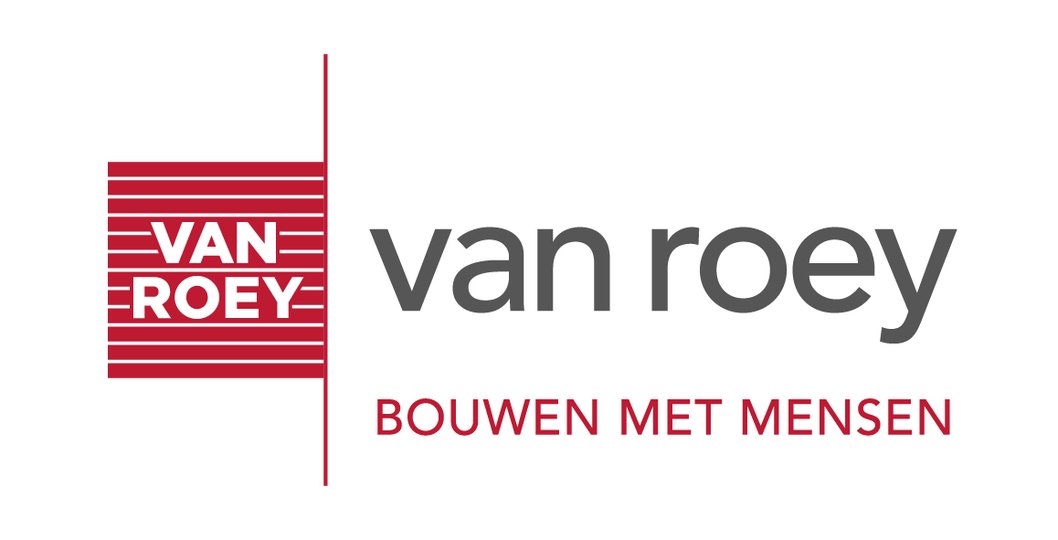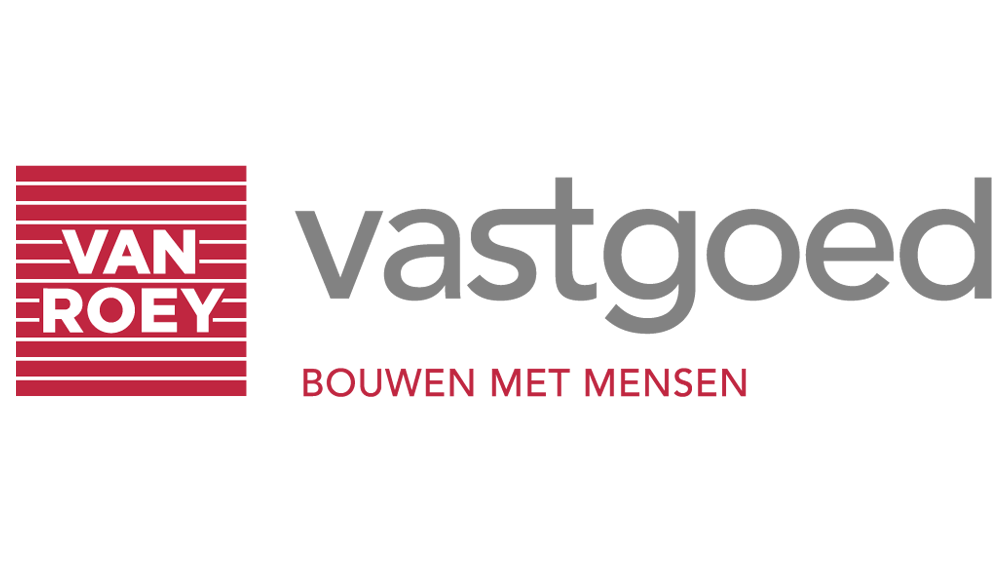Van Roey Group is a Belgian real estate group that generates an annual revenue of 400 million euros. Through the years, they have managed to both maintain a hegemonic position in the Belgian sector, and to be at the forefront of innovation in various fields of construction.
How do they achieve it? Chief executive Bert Grugeon explains their inspiring vision below :

Chief executive Bert Grugeon
Can you introduce yourself and explain what Van Roey does ?
Bert Grugeon : Van Roey is a group of 10 companies sharing a joint vision. We are promoting mixed projects, with a special focus on residential. We want to improve life quality by creating sustainable living spaces. In order to do so, we work in coordination with small companies and local people. We ask them : what are the neighborhood’s needs? What added value can we offer them ? And in response, we offer them long-term solutions.
The real estate world is changing, and life quality is going to be greatly improved. But there are many things to do in the city beforehand (e.g. : creating green spaces, improving mobility, …).
In view of this, we don’t just wish to sell buildings, but we also think about how we can improve the surrounding environment. And in order to that, it is important to engage in a lasting dialogue with its inhabitants.
People are living in smaller spaces now, to keep rent affordable. So the added value mainly comes from communal areas : e.g. coworking places, guest room, party room… There are many possibilities, but what we do with them should be decided with the occupants, according to their specific needs and desires.
“At Van Roey, we want to be a conversation company, focusing on people and their needs.”
Van Roey is and continues to be at the forefront of real estate innovation. What can you tell us about your short-term, mid-term and long-term vision?
In the short-term, we want to produce affordable products that meet the customers needs. In the long-term, we want to develop more sustainable solutions. We also have an innovation team, which examines topics such as 3D-printers, robotics, renewable energies,… and is talking on a regular basis with universities and all kinds of actors involved in these topics. We believe that in 5, 10 years ahead, it will bring us a great added value.
We are also thinking about buying a company whose core focus would be (geothermal) energy management. In the future, energy management will be one of the main issues in the real estate world. So, even if, for the moment, we already have a few projects with an interesting energy management, we want to increase the numbers of these projects and improve them.
In the long term, we are heading towards standardization of construction. Most of the construction itself will be made in the factory, and on the construction site, they will just have to assemble the pieces, like LEGO toys.
Nowadays we are building the same way we were 20 years ago. But it is going to change radically in the next few years, and we want to be at the forefront of those changes.
What technologies and solutions would you like to see developed further, in order to ease work in construction (at all levels)?
We would like to use sustainable and circular energy in our construction processes. We are slowly starting to do so, but are hoping to see an improvement in the coming years.
We have various projects that work with circular or renewable energies (e.g. the Nieuwe Dokken in Ghent). But we want to incorporate these techniques into the building process itself.
For the moment, we are trying to use the environment’s resources. For example, we have a project in a town that produces a lot of wood. So we take advantage of it, and reuse the wood to heat buildings. And because we use local resources, we no longer need gas or fossil fuels.
Regarding your “green approach” and your developments in renewable energies : what advances have you been able to put in place over the past few years, and what do you hope for the future? I’m thinking for instance of materials recycling techniques, your use of geothermal energy, … On that matter, what would you say is your most innovative project at the moment?
The Nieuwe Dokken, in Ghent. It is an innovative residential project of approximately 400 homes. For this project, we worked specifically on the themes of living together, renewable energy, and mobility.
In terms of common areas, we have installed a shared garden, which we supervise for 2 years. We have put up a vegetable garden, and twice a year, we organize a big harvest party with everyone.
And, still regarding common spaces, through an active dialogue with the occupants, we question which are the most useful and will benefit the occupants the most, while building them, and in the long-term. It is important for us to have a good relationship with the people who live there, and they know we are committed for the long-term.
In terms of energy, we have developed an installation operating on circular energy. It doesn’t work on gas but is building a heating network from the factory. It allows us to heat the whole neighborhood (400 houses). Additionally, with a sewer and garbage recycling system, we create biogas that help heating too. This is a CO2-neutral installation : it is a very sustainable project, and we have proved it was doable.
Regarding mobility, we also wanted to offer new solutions. So in the Nieuwe Dokken, you cannot buy a parking space anymore. Instead, we offer long-term bicycle and car renting services for those interested. And our buildings are located near public transport as well, so there aren’t any problems of mobility. And that strategy is successful : in other buildings, almost 100% of the occupants have a car, whereas in the Nieuwe Dokken, this figure drops to 60%.
We are also partners in several very interesting projects, for example in geothermal energy, but we are not the project owners.
And speaking of innovation, what can you tell us about your new project with Kamp C, built using a 3D printer?
We are one of the partners involved in this project. For the moment, it is an experience : we still have to see where it leads us and what are its possibilities.
You want to develop multi-purpose buildings. But at the same time, you make tailor-made, customer-focused buildings. How do you articulate these two seemingly opposite goals?
We have to distinguish between our current and long-term projects. Now we are developing tailor-made projects, but we are heading toward standardized buildings, with flexibility as main value. The business model is changing : today, contractors are concerned with the construction cost of year 1. But we want them to look on the long term. It is both more sustainable and advantageous to make flexible buildings with a circular energy system.
We can see that changing in other countries (e.g. in the United States). And EU legislations are going in this direction as well. So it will come to Belgium, the only remaining question is when. We are only at the beginning of an era of great changes.
As a major player in the Belgian real estate environment, you contribute to shape the city of the future. What changes have you observed in recent years, and specifically since 2020?
All the big companies are looking into prefabricated buildings now. And they are also beginning to be interested in circular, sustainable solutions, because more and more contractors, clients, cities, etc. are asking for buildings that are self-sufficient in energy. In the future, this will be standardized.
Then, if we want to build sustainable buildings that last, say, 50 years, we need them to be flexible. We have to think long-term. Currently, we can build specialized parts in factories and it doesn’t cost companies that much. But these buildings can be demolished after 20, 30 years: it is what it is happening right now for relatively young buildings. And that doesn’t seem interesting to us.
Finally, would you like to add anything ? What do you want to convey to our audience, at PropTech Lab ?
At Van Roey, we say : “human first’. We aim to understand the world and the people who are surrounding us. And then, as I have said, our second focus is about sustainable solutions.
We are more and more heading towards urban landscapes, specifically in Belgium. We will most surely live in crowded city centres. It is therefore important to invest in sustainable social models : our life quality will depend on it.
As contractors, we have a responsibility in that matter. We can and must improve our urban environments in order to live in greener and nicer societies. The cities of Copenhagen or Vancouver, for instance, have developed interesting urban models that are human-focused ; they set good examples for the future development of our cities.

For more information : https://www.groepvanroey.be/nl
Liuba Diederich
